As basketball players and coaches we need to make sure that we are allowing our bodies (and our player’s bodies) to recover. Reovery is a HUGE piece of basketball training. Obviously, rest is one way to make sure you are recovering, but there are a lot of other tools we can use to make sure that our legs are fresh and ready to go the next day. We always prescribe certain amounts of recovery in all our personalized basketball training programs.
The top recovery methods we will cover are:
- Soft-tissue therapy (Myofascial release) or massage
- Cold-water therapy
- Sleep!
- Compression gear
- Stretching
- Slow and easy efforts
Myofascial release or Soft-tissue therapy
This is a form of soft tissue therapy used to treat the functions of the body that have been altered or impaired because of intense training. This is done by relaxing contracted muscles, increasing circulation, increasing the flow and drainage of body fluids (venous and lymphatic), and stimulating the stretch reflex of muscles and the muscles connective tissue.
Put simply, this helps your body to heal itself, and it should be a required step in your recovery from workouts. If you have the money to go get a massage therapist or an active release specialist, go for it. But for most of us, it’s off to the land of foam-rolling and lacrosse balls. There are many benefits associated with soft-tissue work: Improved mobility and range of motion, reduction of inflammation, quicker recovery, and many more.
As you practice soft-tissue therapy and foam rolling, know that there is no ONE way to do it. Everyone is going to have slightly different tender spots, different areas of muscle tension, scar tissue, adhesions, and more. You will also have to learn what works for you. You don’t want the rolling to be so light you can’t feel it, but you also want to use enough pressure to get the job done. Think of the pain scale…most experts would recommend you never go above a 6 or a 7. Generally roll for 15-45 seconds on each leg (or side or foot, etc…)
A few extra guidelines:
It is important to drink lots of water after a foam rolling session as your body drains fluids, and these fluids need replaced
Keep your core tight during foam rolling. This will help to eliminate strain on the lower back during rolling.
Don’t grunt and have a “pain-face” during foam rolling. Despite any tenderness or mild pain from the rolling, make sure you continue normal breathing and keep your face and neck in an unstrained position.
Foam rolling is not for recent injuries, it is for regular soreness associated with training. Do not use foam rolling for chronic injuries, do not use it on your joints, and do not use it on recent injuries.
What you will need:
Foam roller ($25-$50 dollars)
Lacrosse ball (less than $5)
Tennis ball (less than $3)
Alternatives & Optional:
The Massage Stick – These are tools with two handles that allow you to apply pressure with your arms to areas where it is more difficult on a roller
Medicine ball – A medicine ball also works well if it is a solid ball.
Abductor release
Extend one thigh and place foam roll in the groin region on the inside of the thigh with body lying face down on the floor. Roll this area and find the tender spots. You may stop and pause on any of the tender spots you feel, or you can focus on rolling those tender spots.
Hamstring release 1
Place one hamstring on the roller with the foot of the leg not being rolled crossed over top the foot on the leg that is being roll. The hips should not be on the ground, rather your hands should be on the ground keeping you in the air, with all your weight on foam roller. Roll from just above the back of the knee all the way back to just before your butt. You may stop and pause on any of the tender spots you feel, or you can focus on rolling those tender spots.
Quadriceps release
Lie face down on the ground with one quadriceps (thigh) on the foam roller. Tighten your abs and glutes before you start rolling to protect your back muscles. Roll from just above the knee, all the way up to the pelvic bone. You may stop and pause on any of the tender spots you feel, or you can focus on rolling those tender spots.
IT Band release
Position yourself in a lying down position on your side with your hip on the foam roller. Roll just below hip joint down the outside thigh to the knee. This one is often painful for athletes, be careful and don’t over-do it. You may stop and pause on any of the tender spots you feel, or you can focus on rolling those tender spots.
Upper back release
Place hands behind head or across the chest. Lie back onto the foam roller and raise your hips up off the ground. Stabilize the head and neck in a neutral position, and then roll the mid-back area on the foam roller. You may stop and pause on any of the tender spots you feel, or you can focus on rolling those tender spots.
Plantar Fascia (foot)
Place a tennis ball (or lacrosse ball) on the ground. Place the sole of one foot on the tennis ball with the other foot on the ground. Stand next to a wall for balance if needed. Shift your weight from the foot on the ground to the foot with the ball underneath, and roll the ball back and forth along your plantar fascia.
Calf (Gastrocnemius) release
Sit on the ground with your legs straight. Place one calf on top of the roller and cross the other leg over top of the leg that is on the roller. Using your arms, press yourself up so that your hips are unsupported. Roll back and forth, keeping the knees locked. You may stop and pause on any of the tender spots you feel, or you can focus on rolling those tender spots. (This can also be done with a lacrosse ball)
Achilles tendon
Sit on the ground with your legs straight. Place one calf on top of the roller and cross the other leg over top of the leg that is on the roller. Using your arms, press yourself up so that your hips are unsupported. Roll from the top of your heel (of your foot) to halfway up the calf muscle. (This can also be done with a tennis ball or a lacrosse ball. These alternatives are actually often easier as you are able to apply pressure without having to balance unsupported on the foam roller.
Latissimus dorsi
Lie on your side with the foam roller in your armpit. Externally rotate your arm to stretch the lats. Glide the roller up and down the outside portion of your back under your armpit.
Hip capsule – Lacrosse ball
Stand next to a sturdy wall. Place a lacrosse ball on the wall at hip height. Roll the lacrosse ball around your hip capsule. You may stop and pause on any of the tender spots you feel, or you can focus on rolling those tender spots. (This may also be done with a tennis ball for a milder roll.)
Massage: Getting a nice deep tissue or sweedish massage is another way to get soft tissue work – however, it can get pretty costly
Cold water therapy
As miserable as it may sound, it works. It is as simple as it sounds. Fill up a tub with COLD water (around 55 degrees Fahrenheit, 12-15 degrees Celsius) and get in. Why on earth would you do this? When you train hard, there are small tears in your muscle fibers….the ice bath starts the healing process. A quick note on the science: It is thought that the cold water constricts the blood vessels and flushes out waste products like lactic acid, along with decreasing inflammation. Then when the muscles heat back up, there is increased circulation which also helps in the healing process.
Scientific research and recommendations for the exact time to be in the water, and the temperature of the water varies. A good bet would be to spend 10-15 minutes in 55 degree water.
Sleep
I cannot promote sleep enough. An athlete in training must get more than 7 hours of sleep per night at a minimum. This is CRITICAL for recovery. Sleep should ideally be in your own bed, by yourself, in a dark and quiet environment.
Here are some good rules on sleeping:
- Unplug for at least 30 minutes before bed. This means no computers, iphones, ipods, blackberries, or video games. Read a book, have a relaxing conversation, stretch, or do anything else calming and relaxing.
- Try not to eat too much before bedtime. You don’t want to go to bed full and you don’t want to go to bed hungry. Both can have negative effects on sleep
- Go to bed and get up at the same time every day if possible. This is the way our bodies are programmed to work, and when we deviate from this it can have negative effects.
- Sleep in a dark and quiet environment.
- Try to not get into your bed before you are ready to sleep. So if you are reading before bed, do it in another room, in a chair, or sit on the floor.
- Go to the bathroom before you go to bed – common sense!
Compression gear
Compression gear uses power Lycra to compress around the muscles in an effort to reduce vibration and oscillation of the muscles during training. Compression gear can include shorts, tights, short and long sleeve shirts, socks, and arm sleeves. The scientific study results are still mixed here, but again…at the WOH we have personally and had athletes both experience reduced soreness in the days after training when using compression gear. These can often be pricey and aren’t a requirement for training, but we have seen some benefits
Stretching
Stretching is actually a hotly debated topic. Some people say it helps some say it hurts. We at the WOH believe it is a crucial step in recovery. If you have read any of our training guides you know we have a specific stretching routine that we recommend at the end of all of our workouts.
- WOH post-workout stretch
- Child’s pose (2 x 15 sec holds , 5 sec rest)
- Pigeon pose (3 x 15 sec holds, 5 sec rest)
- Knee lunge (2 x 10 sec holds, alternate legs)
- Knee split (2 x 10 sec holds, alternate legs)
- Tricep + shoulder stretch (1×15 sec holds, alternate arms)
- Calf stretch (2 x 10 sec holds, alternate legs)
- Sleeper stretch (2 x 10 sec holds, 5 sec rest, alternate arms)
- Hamstring bent-knee breathe/stretch (3 holds for 5 sec each leg)
- Hamstring leg raise (2 x 10 sec holds, 5 sec rest, alternate legs)
- Kossack stretch (2 x 10 sec holds, 5 sec rest, alternate legs)
- Lying quad stretch (2 x 10 sec holds, 5 sec rest, alternate legs)
- Back of the couch stretch (ext/int) 2×10 sec hold each leg, each stretch (ext/int)
You can see full descriptions of how to do each of these exercises on our website….
In addition to this we also often include longer duration mobility work in our training guides.
Slow and Easy efforts
Rest days don’t mean sit around and do nothing at all. Often times, if you do nothing at all on your off-day, you will feel slow and lethargic when you get back to training the next day. Active rest will have you fresh and ready to go when you get back at it. There are numerous studies that cite benefits of active rest (reduced blood lactate levels, psychological benefits, etc). This really is a nice easy workout. It should be around 50-60% effort and your heart rate should STAY BELOW 65% of your maximum heart rate. Everything should be done at a conversational pace. Add in some stretching, some soft-tissue work, and maybe even a cold water bath and you’ve got yourself a recovery workout.
*Coaches Note: You need to think about your team’s current energy level. Sometimes holding a practice where the effort level stays around 50-60% for an hour or so, combined with some light strength work, and extra stretching can REALLY revitalize your team’s energy level. To take it even further…think about using a trick that Coach K uses at times…Have the team come in, and let them play volleyball with a beach ball for 30 minutes then send them home. Don’t tell them ahead of time, just let them come in and see the nets up. It doesn’t have to be volleyball, it can be any type of fun activity…short and sweet. The MENTAL and physical benefits of this can be huge to a team in the long-stretch of a season
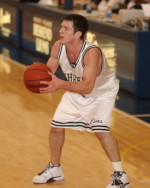 He has 25 years of experience playing basketball, training basketball players, and coaching basketball. The World of Hoops provides intelligent and intense basketball training to take basketball players to the next level.
He has 25 years of experience playing basketball, training basketball players, and coaching basketball. The World of Hoops provides intelligent and intense basketball training to take basketball players to the next level.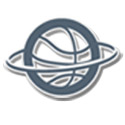 Basketball Shooting – Volume 2 – Feet, Shot Pocket, Set Position
Basketball Shooting – Volume 2 – Feet, Shot Pocket, Set Position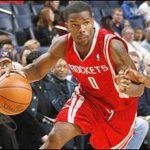 Ball Handling – Eliminate Waste in Your Game
Ball Handling – Eliminate Waste in Your Game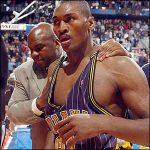 On Court Behavior
On Court Behavior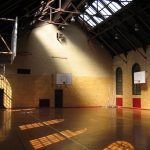 Winning On The Road
Winning On The Road




Speak Your Mind